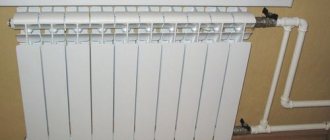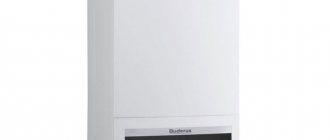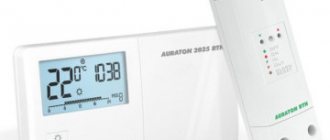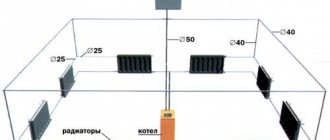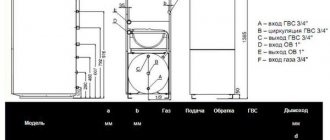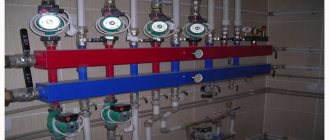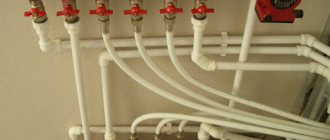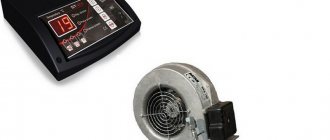You can control the heating operation in one of several ways. For this, various equipment is used, namely:
- automation for timely replenishment;
- mixing units;
- security groups.
However, each type of device has temperature sensors. You can learn about the functional features and types of these devices by reading the information below. It will be especially useful for those who plan to install a heating system.
Purpose of the temperature sensor
Any heating system must operate under human control. The operator should know what the temperature of the coolant is. To determine these indicators required for heating, it will allow you to monitor the expansion of water volume. Using it, you can monitor current data, taking appropriate action if the parameters begin to deviate from the norm.
It has a fairly wide range of uses. It allows you to visually view the heating of the coolant in individual areas where data is recorded outdoors and indoors. Sometimes this device becomes part of a system that guarantees automatic stabilization of parameters.
Types of temperature sensors
At this stage, it is important to choose the right thermal sensor. In this case, the characteristics and types of the device are taken into account. They are classified by installation location, and the device can be placed in the system or at a certain distance so that the device has the ability to control other temperature parameters. The latter are used in tandem with room thermostats.
An immersion temperature sensor for heating is used to determine the temperature of water in pipes. The device is installed on one of the sections of the system. A number of solid fuel boiler models do not have such sensors, so they are installed additionally. The remote temperature sensor for heating must be located outside the system. It can be connected to a programmer or boiler.
Sensor T7335 D1123 overhead Ferroli, Ariston, Bosch, Hermann, etc.
Temperature sensor T7335 D1123 overhead. Honeywell T7335 temperature sensors are designed for use in household gas appliances for heating and hot water heating. Honeywell T7335 temperature thermistors are manufactured in different types, with different resistance coefficient characteristics, and in different shapes and designs. There are direct-immersion, sleeve-immersion and overhead, which are mounted on the surface. Depending on the model and design, Honeywell temperature sensors are divided into models: T7335A, T7335B, T7335C, T7335D, T7335E. Let's consider the T7335D clamp-on temperature sensor, which is used in boilers of the brands Ariston, Ferroli, Bosch, Hermann, Protherm, Sauiner Duval, Bongioanni, etc.; the sensor is also interchangeable with clamp-on and submersible sensors of similar characteristics. The T7335 D overhead sensor is a temperature thermistor sensor that is used in gas boiler equipment to measure water temperature. A resistor is mounted in the body of the patch-on temperature sensor, which changes the resistance depending on the temperature. The resistance of the resistor depends on the temperature of the sanitary water and has a negative temperature coefficient (NTC - Negative Temperature Coefficient). Therefore, temperature sensors with a negative temperature coefficient are called NTC sensors, NTC sensors, NTC temperature probes. At room temperature 25C, the resistance of the T7335D surface-mounted sensor is 10 kOhm, with increasing temperature the resistance decreases, when the sanitary water temperature reaches 70C, the resistance is 1.8 kOhm. Sensors from the manufacturer Honeywell T7335D are sensors that are used in gas boilers; they are used on the surface and are not immersed in liquid. Therefore, when replacing a surface-mounted sensor, there are advantages compared to submersible sensors - there is no need to drain water from the boiler heating system, which simplifies the replacement and installation process. The Ntc T7335D sensor is attached using a metal clothespin - a clip. A thin metal bracket “sole” on a plastic sensor serves as a sensor mount. For electrical connection, the sensors are equipped with terminals with a size of 2.8X0.5mm. The operating temperature range is the temperature range in which the sensing element is capable of operating within a given error and with a given durability. The maximum temperature is the highest permissible temperature that will not damage the sensing element. When determining thermal conductivity (Gth-w), the sensor must be at a temperature above the maximum operating temperature for less than 5 minutes. The thermal conductivity coefficient is equal to the power dissipated in the thermistor, which causes a change in the temperature of the thermistor body by 1 kOhm at a given ambient temperature. The T7335D sensors are manufactured using a metal oxide compound coated with epoxy resin. The sensor body consists of polyamide thermoplastic, terminals are made of tinned brass, and clamps are made of galvanized spring steel. How can I decipher the markings on the T7335 D 1123 sensor? T7335 is a temperature sensor article number from the manufacturer Honeywell. The dots near the sensor markings indicate the diameter of the bracket and, accordingly, the diameter of the tube on which the sensors are mounted. One point for tube size 13-15mm, two points for 17-18mm, three points for tube size 20-22mm. The last four digits on the sensor indicate the production date of the sensors. T7335 sensors are used in boilers of the brands Ariston Uno, Hermann, Micra 2, Thesi, Ferroli Domicompact, BlueHelix Pro, Domina N, Diva, FerellaZip, Domitop, New Elit, Econcept, as well as boilers from Bosch, Junkers, etc.
Author of the article: Anna Kravets
Types of sensors according to the method of taking readings
A temperature sensor for heating can be classified according to the method of taking readings; devices can be:
- bimetallic;
- alcohol.
The first of the listed designs assumes the presence of two metal plates and a dial indicator; the plates are made of different metals. One of them deforms when heated, creating pressure on the arrow. This technique is highly accurate, but has the disadvantage of high inertness. The average cost of such sensors is from 600 to 900 rubles.
Types of sensors
To choose the appropriate sensor, you need to understand how they differ. Thermostats are made of different materials. They also differ in installation method, operating principle and functions. They are made from reinforced plastic. But they also come with a bimetallic body. These devices are mounted outside the heating devices.
There are also devices that perform the functions of controllers. They are called water thermostats. They are found in boilers or heating water boilers.
Based on the method of temperature control, devices are divided into the following types:
- Collect information from the floor sensor.
- Collect data from the air sensor.
- Combined.
The second type of device is considered the most popular. They are installed on heating radiators. Floor sensor devices are used in the presence of a floor heating system. The air temperature sensor is considered the most accurate. In this case, the information will be more reliable.
The air temperature sensor, if it is remote, is installed in the wall. The connection is made to the common wiring. A thermostat with a sensor for an incubator has a similar principle. The device is connected to the network, the cord from the sensors is lowered inside. On the outer area there is a socket for connecting the power cord. Thanks to the display, you can control information.
About the alcohol variety
Heating can be alcohol-based. If we compare them with the above, then in this case there is almost no inertia in displaying values. In many ways, the operating principle is similar to a traditional thermometer. An alcohol-containing composition is placed in a sealed flask, which expands when heated. The marks on the flask indicate the water heating value. The design is quite simple, but it is not very convenient for monitoring readings. You will have to pay approximately 1900 rubles for an alcohol sensor.
Before installing such temperature sensors for heating boilers, you must read the instructions. From it you can find out the installation dimensions for connection to the pipe, operating recommendations and temperature limits. When purchasing an immersion sensor, you must also take into account the length of the sleeve; it can vary from 120 to 160 mm.
Types of thermostats for boilers and reviews about them
Heating is a temperature controller, which is divided into several types, among them:
- central thermostat;
- thermostat for radiator;
- local thermostat;
- room thermostat.
The central thermostat, according to consumers, helps ensure the safety of the entire boiler room. It is installed together with the boiler, and the device transmits information using wires. It is powered by electricity, but is characterized by autonomy from the boiler. Consumers emphasize that a central thermostat is necessary to adjust the operation of boiler equipment.
Thermostat for a heating boiler is a temperature controller that can be room or local. With the help of such devices, according to buyers, you can adjust the temperature in each room, creating your own microclimate there. The device should be located next to the boiler, but away from doors and windows, so that the temperature readings are not distorted.
As home craftsmen emphasize, it allows you to control the temperature of each heating device separately. The design of such regulators is quite simple. The equipment consists of a valve that reduces or increases water flow. The unit also has a thermostat that controls this process.
Modern heating equipment is characterized by the presence of built-in or external elements that allow you to control its operation, and one of them is a temperature control sensor, with which you can set a comfortable mode in the house. But if in electric or gas boilers the control unit is capable of changing the heating intensity of the heating element or burner and their operating time, then for solid fuel installations this principle is not suitable due to its design features.
Connecting and setting up an outdoor temperature sensor
The temperature sensor is connected only to a gas boiler that is disconnected from the power supply. To carry out this process, use a 2 * 0.5 mm cable less than 30 m long. It is pulled through a hole in the wall and connected to the terminal block of the device without observing polarity. The wire is insulated using a special coupling.
The outdoor temperature sensor is connected to the electronic board of the gas boiler. For each model, the connection location may be different; it is determined according to the control board diagram, which is available in the instructions for the unit.

The temperature in the room can be adjusted in the range of 9-30ºС.
The outdoor sensor regulates the temperature of the coolant according to a method that includes the following data:
- Ti – water temperature at the boiler outlet;
- Troom – set room temperature value;
- Te – outdoor temperature sensor readings;
- K – insulation coefficient set by parameter P6.
Programmer for a gas boiler - connection and overview of models
The coolant temperature is calculated using the following formula:
For example, to maintain a room temperature of 23°C with an insulation coefficient of 10 and an outdoor temperature of -10°C, the coolant must be heated to 56°C.
The most difficult thing in this calculation is the selection of the insulation coefficient, which is determined experimentally. Its setup is done like this:
- on a gas boiler, turn the DHW temperature regulator to maximum, and heating to minimum;
- the temperature contour handle is moved 3 times in the direction of increase within 3 seconds;
- The setting parameter code P6 starts flashing on the LCD display;
- the coefficient value is selected by turning the heating circuit regulator;
- to see the value of the selected parameter, press the reset button;
- to change the indicator, press reset for 2 seconds;
- The factory value 20 will appear on the screen; you can select a parameter in the range from 5 to 35;
- fix the selected value by pressing reset for 2 seconds;
- To exit the setting mode, turn the heating regulator 3 times within 3 minutes.
When choosing a thermal insulation coefficient, it should be taken into account that the higher the value, the worse the building is insulated.
In order for outside temperature sensors for gas boilers to work accurately and efficiently, it is important to find a suitable location for its installation and make the settings correctly. Errors will lead to the fact that the unit will not use fuel economically or the temperature in the house will not be maintained at the proper level.
The principle of operation of a temperature sensor in a solid fuel boiler
The main task of a thermostat for a solid fuel boiler is to serve as a control element for the production of thermal energy. And its quantity directly depends on the speed and intensity of the combustion process, which, in turn, is affected by draft. Thus, the use of a temperature sensor comes down to regulating the amount of air entering the boiler and necessary to maintain combustion. The principle of its operation is that by monitoring the temperature level, the sensor directly influences the change in the position of the damper.
The thermostat does not require connection to the electrical network, and its operation is based on the laws of thermomechanics: maintaining or changing the temperature is carried out by the damper and its degree of opening. If the amount of oxygen entering the boiler decreases, the combustion process fades and the production of thermal energy is reduced, and vice versa.
The use of a temperature sensor in a solid fuel boiler, which is often called a draft regulator, provides not only a comfortable temperature in the house, but also allows you to optimize fuel consumption, thus increasing the efficiency of the equipment.
Automation of solid fuel boiler
To regulate the operation of the boiler, you can install a control unit, to which you can connect both temperature sensors outdoors and indoors. In this case, communication with the unit can be provided either wired or wireless, which facilitates the process of control and setting parameters.
One of the most effective ways to regulate the operating temperature of the boiler is an automatic control system, which includes the following elements:
- air injection pipe;
- fan;
- controller with control unit;
- circulation pump.
In this case, the boiler temperature sensor is adjusted due to the controlled dosing of the amount of oxygen entering the firebox, the supply of which is controlled by the controller and the fan. Depending on the program, the controller sends a command to the fan and by changing the rotation speed, the volume of oxygen supplied changes, and accordingly the amount of generated thermal energy.
But the use of this method to regulate the temperature has some features related to the fact that during the combustion process, the amount of fuel in the combustion chamber decreases, and, accordingly, in order to prevent the attenuation process, it is necessary to shut off the oxygen supply. For this purpose, a special gravity valve is used, which, in the absence of fan operation, limits or completely closes the access of air to the firebox.
Solid fuel boilers for home and temperature control equipment
offers a large selection of solid fuel boilers, as well as additional equipment for them, including temperature control sensors. In addition to mechanical devices, you can also purchase an automation control unit, which allows you to configure the operation of your heating equipment as accurately and easily as possible.
It is better to entrust the selection of the necessary equipment for the boiler and its configuration to professionals. Our specialists are always ready to provide advice on all issues, and you can use their services both by phone and on the website of our online store “Alfatep”.
You can purchase a boiler for your heating system, have it delivered to your site, or order installation and commissioning services without leaving your home, directly on the company’s website.
In the online store “First Plumbing Store” you can always buy a room temperature sensor for the boiler. We are pleased to offer high-quality products from well-known manufacturers at competitive prices. You can easily place an order online and receive the desired sensor in the shortest possible time.
Analog Input 1
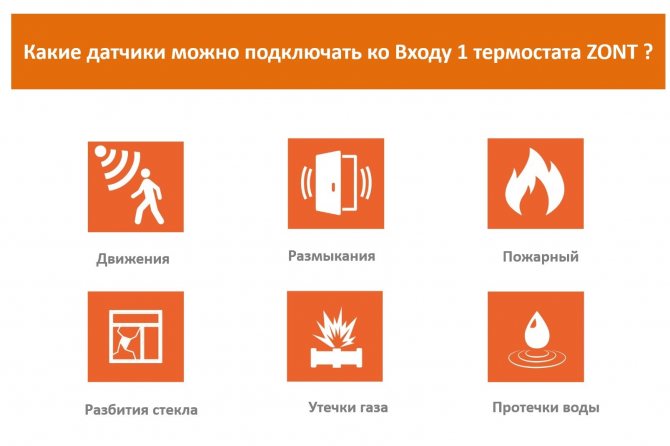
Security sensors are assembled into a loop and connected in parallel to one input. The sensors in the loop must be of the same type as the response signal (appearance of +12VB, disappearance of +12V, short circuit of the loop, etc.). The level of the signal controlled by the thermostat input must be configured in the ZONT web service (Settings/Thermostat Settings/Input Settings).
Connection features:
— the maximum distance of the last sensor in the loop is no more than 100 m;
— the number of security sensors (ICD, MKD, etc.) and pressure sensors in the loop — no more than 10 pcs.;
— the number of information sensors (fire, leaks, gas leaks) in the loop — no more than 5 pieces.
Instead of security and information sensors, you can connect the “Boiler trouble” signal or a signal from the room thermostat to Input 1.
Pressure meter

Recommended models of threshold pressure sensors:
pressure sensor XP6oo 0.2-1.2 bar DN1/4
pressure sensor PTE, DUA, KOMPAKT

ADD compatible analog pressure sensor: HK3022 DC 5B G1/4 0-0.5mPa
Gas leak sensor
Recommended for connection: gas detector Kenar
Main features of room temperature sensors for boilers
Standard regulation of boiler power using a handle or other mechanism is considered indirect. This is due to the fact that the equipment does not have data on the room temperature. It only heats water upon command from the user. When the temperature outside decreases, heat loss inevitably increases. As a result, the room begins to cool, and the temperature difference between the “supply” and “return” increases. The boiler begins to work in intensive mode. To ensure heating of the room, it spends more fuel. When the temperature drops, you have to change the performance of the equipment.
The process can be simplified!
It is enough to use a special room temperature sensor for the boiler (thermostat). The thermostat is as simple as possible. It works on the following principle: when the set temperature is reached, the device closes the electrical circuit. After this, the gas valve or a special controller turns off the burner or switches it to low mode. The coolant gradually cools down. This reduces the temperature in the room. Subsequently, the burner operation is resumed.
The presented room temperature sensors for boilers are distinguished by:
- Long service life. The quality of the automation is confirmed by the manufacturer's warranty. You can be sure that the sensor will be used for a long time.
- Functionality. The presented sensors cope with all assigned tasks.
- Attractive design. Modern devices can be installed in any premises, the interior of which will not be damaged.
- Practicality. The proposed sensors do not require special care.
- Affordable price. You don't have to overpay for sensors. Even popular models can be ordered on our website with a limited budget.
Electronic sensors
Nowadays electronic devices are in great demand. They have no moving parts. Semiconductor parts are used for this. The device is powered by current, so they are connected to an outlet or to a DIN rail, but batteries can also be used.
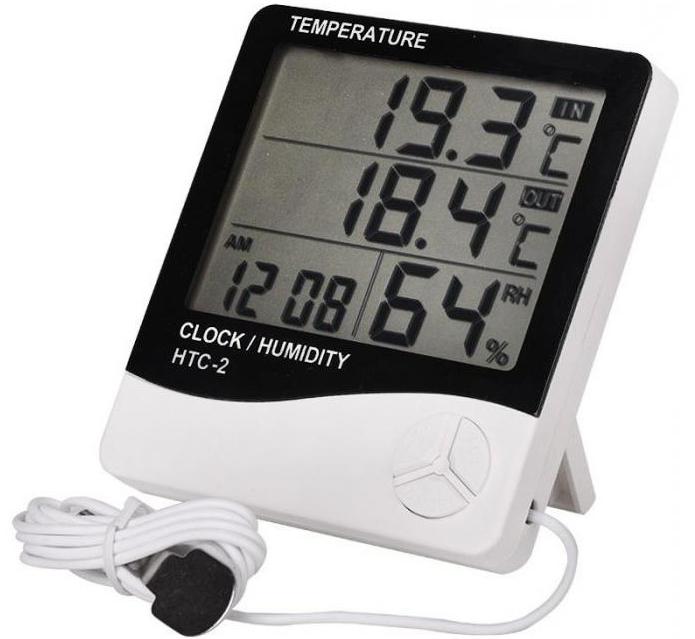
A room temperature sensor with SMS notification is considered very convenient, since it allows you to control the entire process using a gadget. The user will receive all relevant information on the phone. Electronic devices have a monitor that displays all the necessary information. Many of them have the function of settings for certain days.
Thus, sensors are a necessary thing for the home. It is enough to install them correctly so that the room has the desired temperature level. You will always feel comfortable in such a home.
Advantages of ordering products in our store
- Ease of choice. All products are supplemented with high-quality descriptions and images. Even our new customers can choose the right sensor.
- Help from professionals. Our specialists will always answer all questions regarding the sale of the proposed room temperature sensors and their return.
- Product warranty service.
- Quick shipment approval and order confirmation. We sell all automation systems for modern boilers on terms convenient for customers. You don't waste your time.
- Possibility of exchange of goods of inadequate quality.
- Prompt delivery in Moscow and other cities.
Contact us! Use high-quality automation from well-known manufacturers. Operating the boiler will never cause problems. At any time of the year you can achieve optimal temperatures in all rooms.


